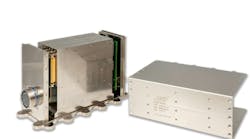Officials of the Air Force Research Laboratory at Wright-Patterson Air Force Base, Ohio, announced an $8.5 million order to Engility this week for additional work in the Optical Radiation Bioeffects and Safety (ORBS) program.
Engility experts are seeking to understand, mitigate, and exploit the effects of ultraviolet, visible, and infrared optical radiation devices and their countermeasures on U.S. military personnel and aerospace missions.
Engility also will continue looking for new ways to diagnose and treat combat injuries due to optical radiation; improved methods of combat casualty care, including triage, diagnosis and treatment; and simulating laser injury to assess mission performance.
Monday's order to Engility is a contract modification to increase a previously awarded indefinite-delivery/indefinite quantity contract for the ORBS program.
The notion of optical warfare involves the use of light -- as opposed to the use of radio frequency (RF) energy -- for weapons, communications, sensors, defensive measures, surveillance, and other instruments of warfare.
Optical warfare is one component of an emerging military discipline called spectrum warfare. In additional to optical warfare, spectrum warfare includes electronic warfare (EW) and cyber warfare.
Of particular interest in optical warfare are lasers for weapons and communications, as well as protecting personnel from the effects of laser weapons, and disrupting the enemy's optical communications.
Related: Optical warfare just took a big step toward reality with award of Navy CESARS contracts
The ORBS program seeks to identify, develop, and perfect new technologies for using lasers and other kinds of light emitters as weapons, as well as for protecting military personnel from the effects of lasers.
Among the most dangerous weapons effects of lasers is to blind the enemy or to cause temporary blindness or confusion from relatively low-power lasers -- also known as "dazzlers."
Engility experts will try to develop new technologies to diagnose and treat these kinds of optical warfare combat injuries; find economical and efficient ways to care for optical warfare combat casualties; and simulate laser injuries to help develop laser weapons and laser protective technologies.
On this contract modification Engility will do the work at Joint Base San Antonio-Fort Sam Houston, Texas, and should be finished by April 2020. For more information contact Engility Corp. online at www.engilitycorp.com, or the Air Force Research Laboratory at www.wpafb.af.mil/afrl.
Learn more: search the Aerospace & Defense Buyer's Guide for companies, new products, press releases, and videos



